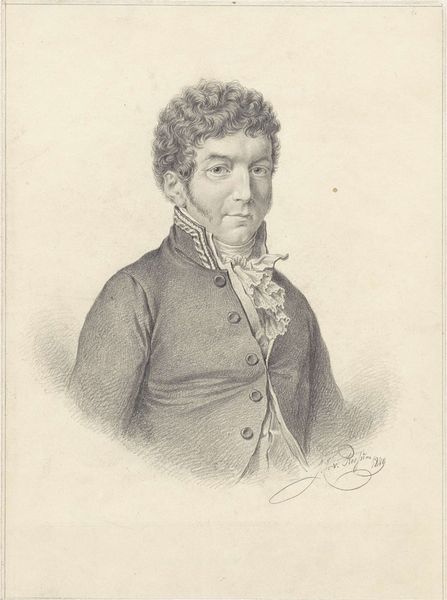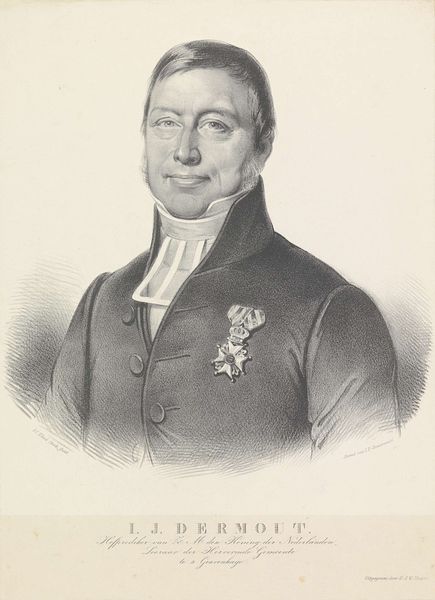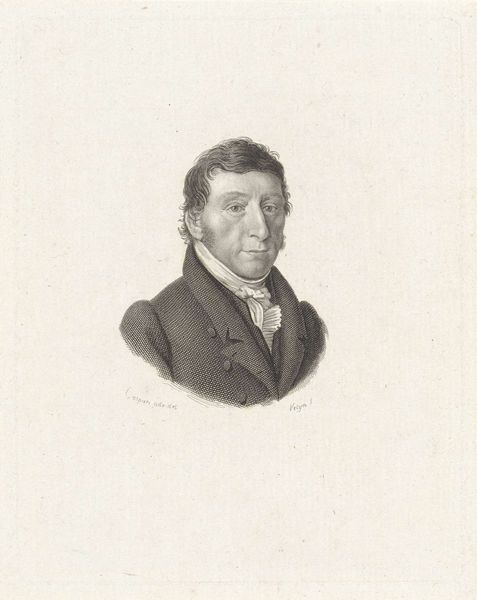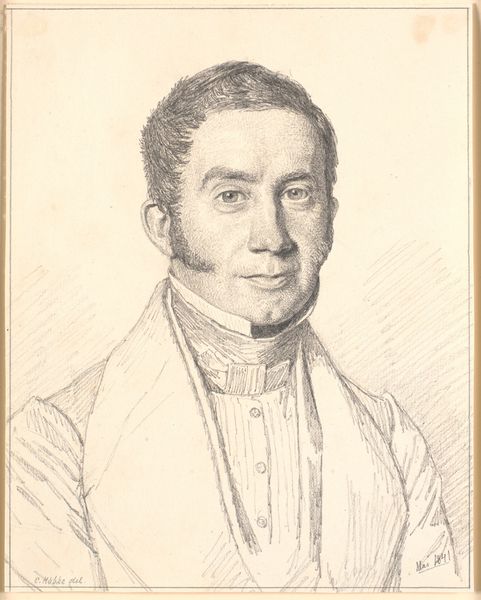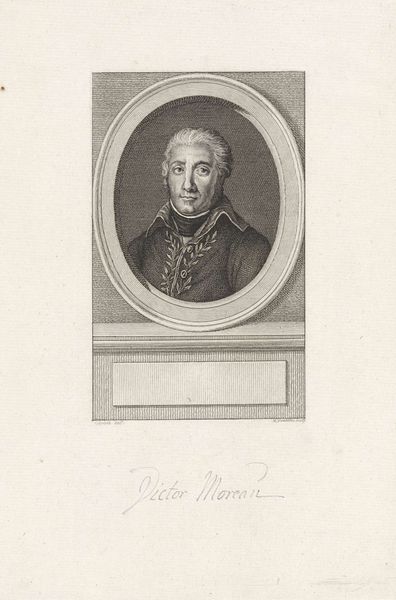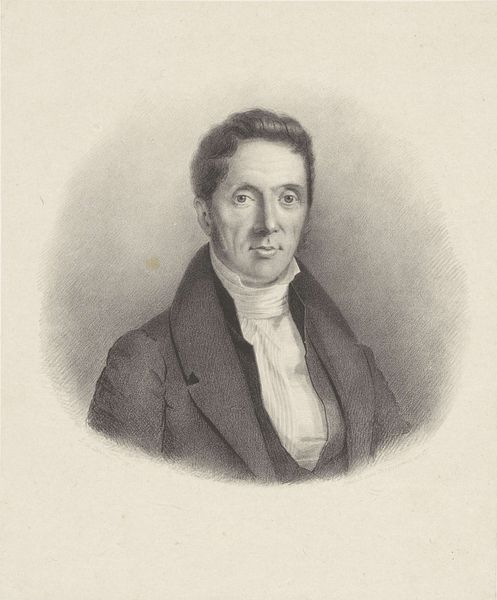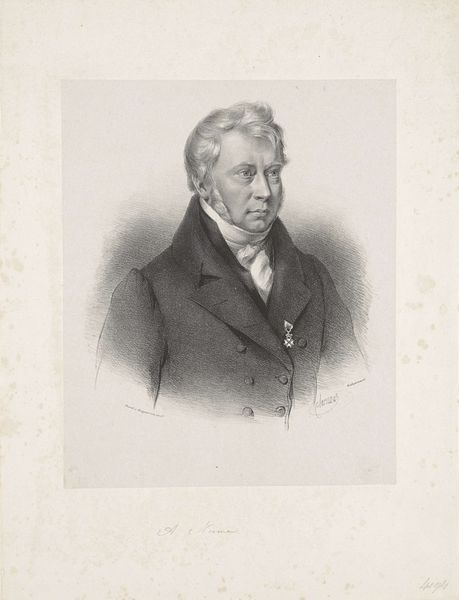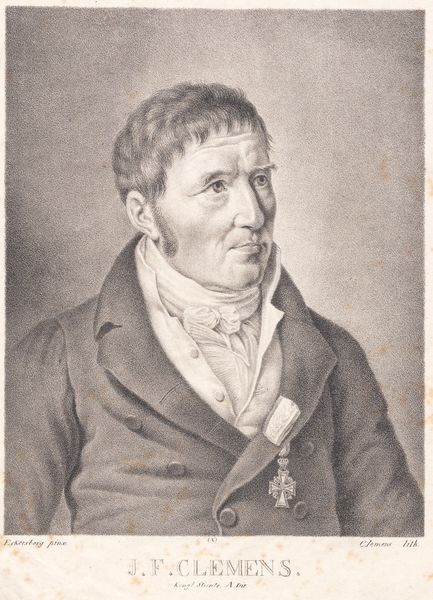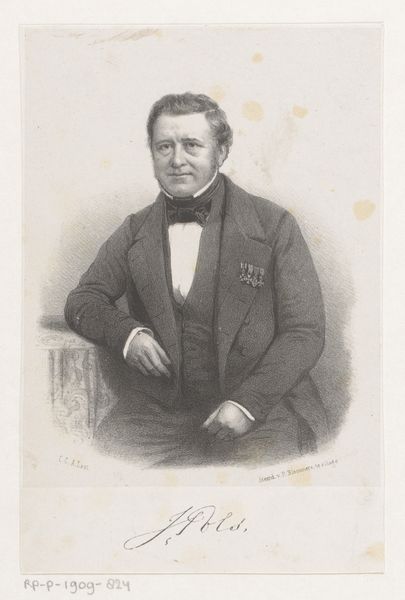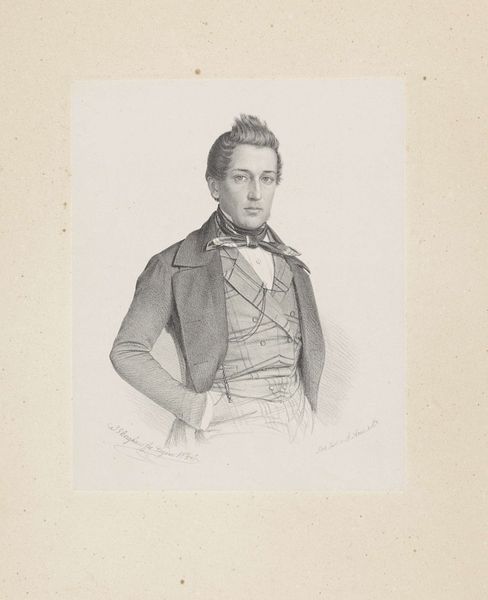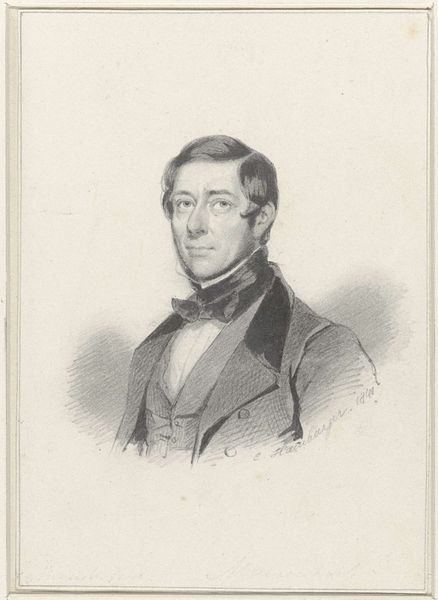
Portret van Frederik Willem Floris Theodoor van Pallandt van Keppel 1812 - 1867
0:00
0:00
drawing, pencil, graphite
#
portrait
#
pencil drawn
#
drawing
#
neoclacissism
#
16_19th-century
#
pencil sketch
#
historical photography
#
pencil drawing
#
pencil
#
19th century
#
graphite
Dimensions: height 290 mm, width 198 mm
Copyright: Rijks Museum: Open Domain
Editor: This is Herman Antonie de Bloeme's pencil drawing, "Portret van Frederik Willem Floris Theodoor van Pallandt van Keppel," created sometime between 1812 and 1867. I find the shading and delicate linework particularly striking; it gives the piece a real sense of depth despite the limited tonal range. How do you interpret this work from a formalist perspective? Curator: Precisely. Note how the artist uses hatching and cross-hatching to build volume, defining the contours of the face and clothing. Consider the stark contrast between the textured areas and the smooth, empty background. What does that opposition of texture and flatness achieve formally? Editor: Perhaps it emphasizes the figure, pulling him forward and creating a greater sense of presence? The texture is definitely concentrated around his face and attire, further drawing the eye. Curator: Indeed. The composition directs the viewer's gaze. Observe how the arrangement of light and dark shapes—the interplay of value—organizes the visual field. It creates a structured space, wouldn't you agree? The artist uses geometric shapes in the crosses he is wearing, drawing your attention to different parts of his upper body. The slight asymmetry provides visual interest. The even tonality further isolates the individual from the external environment. Editor: So, focusing on those inherent visual elements allows us to understand how the portrait functions aesthetically and conceptually? The visual cues certainly convey a message without needing contextual information. Curator: Precisely. Close attention to the materiality, to the structure of marks and forms, will always deliver us to a fundamental understanding of the aesthetic work. Editor: It's interesting to analyze how form dictates content so clearly. Thanks! Curator: A pleasure. Remember: form is not just decorative; it communicates.
Comments
No comments
Be the first to comment and join the conversation on the ultimate creative platform.
